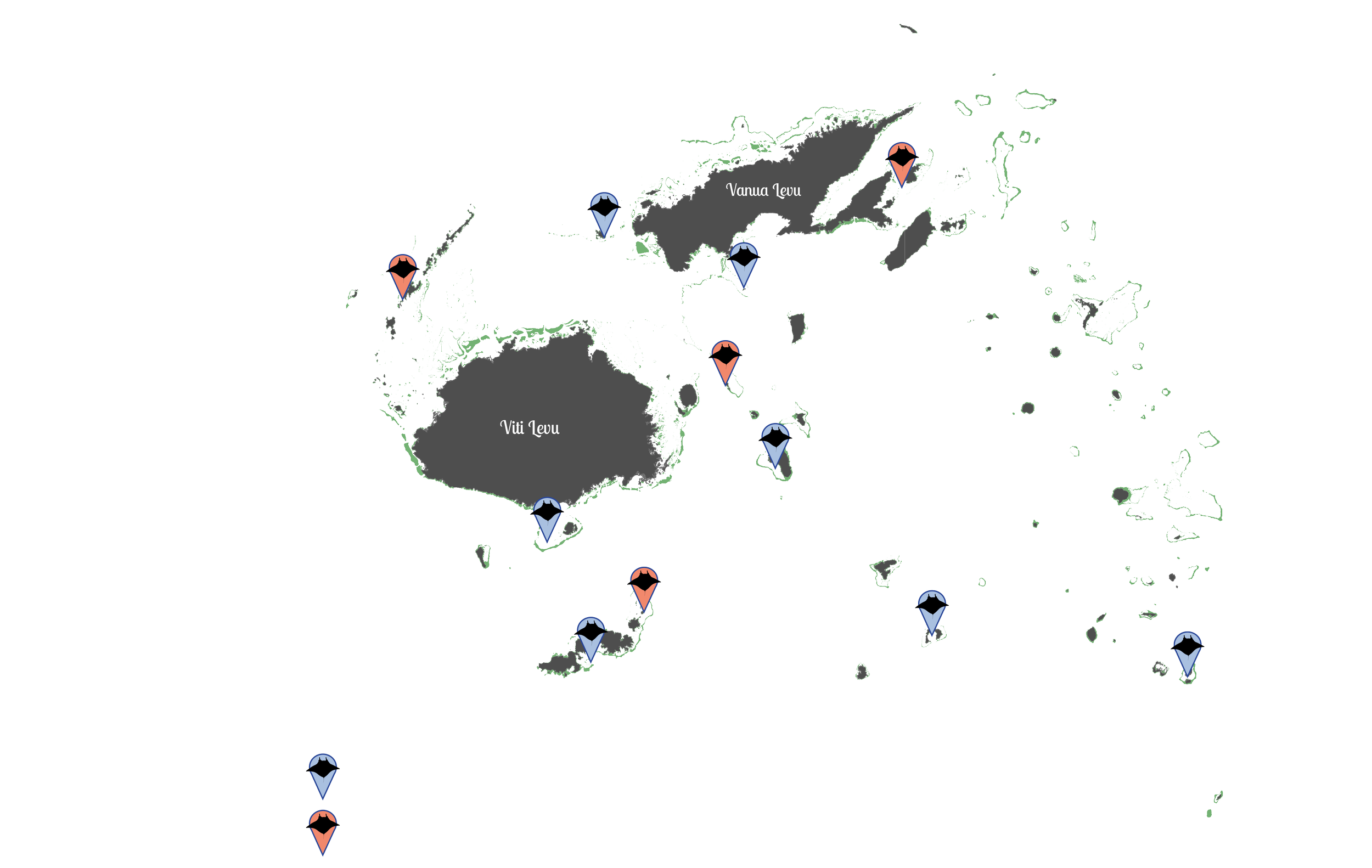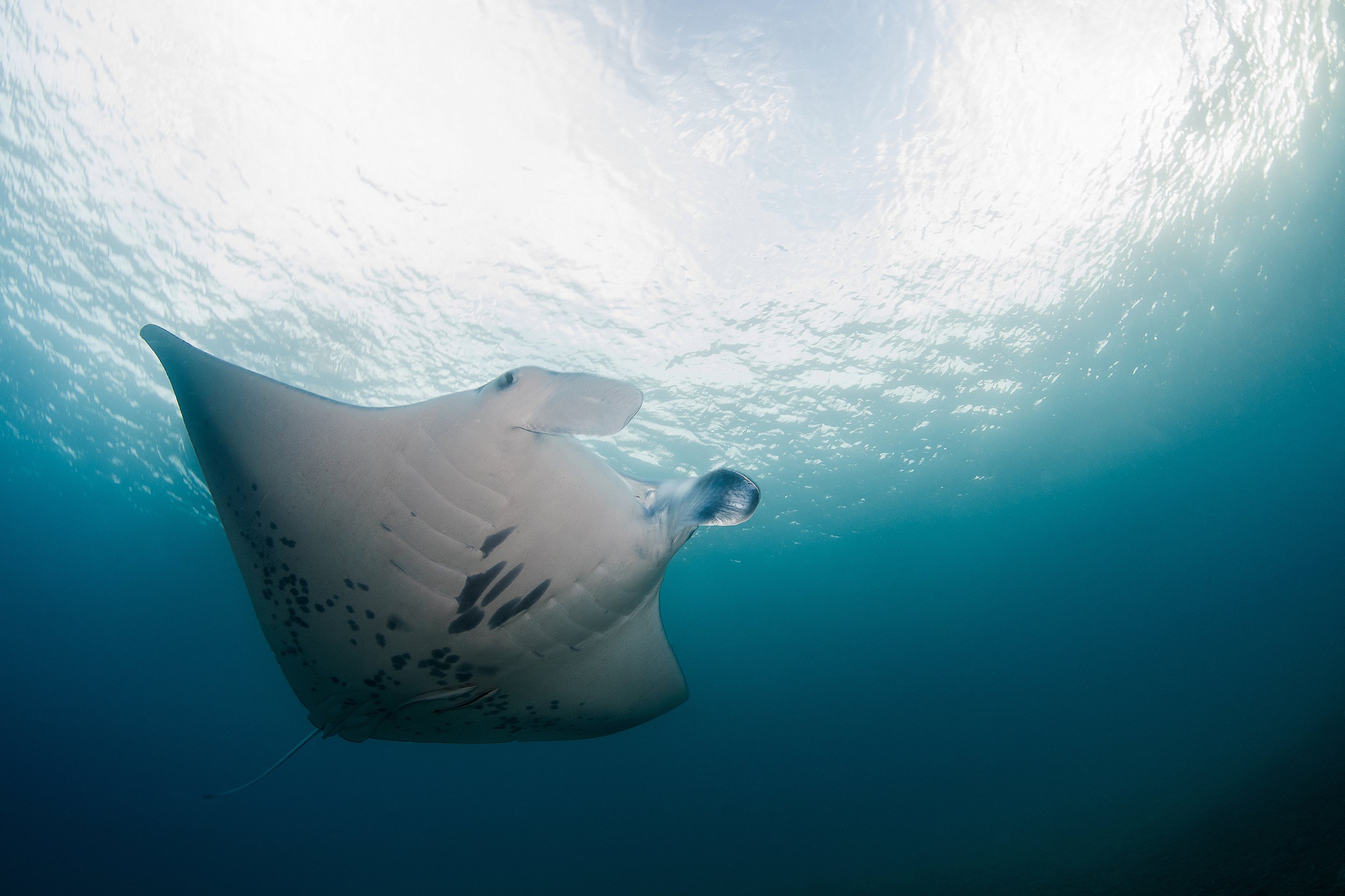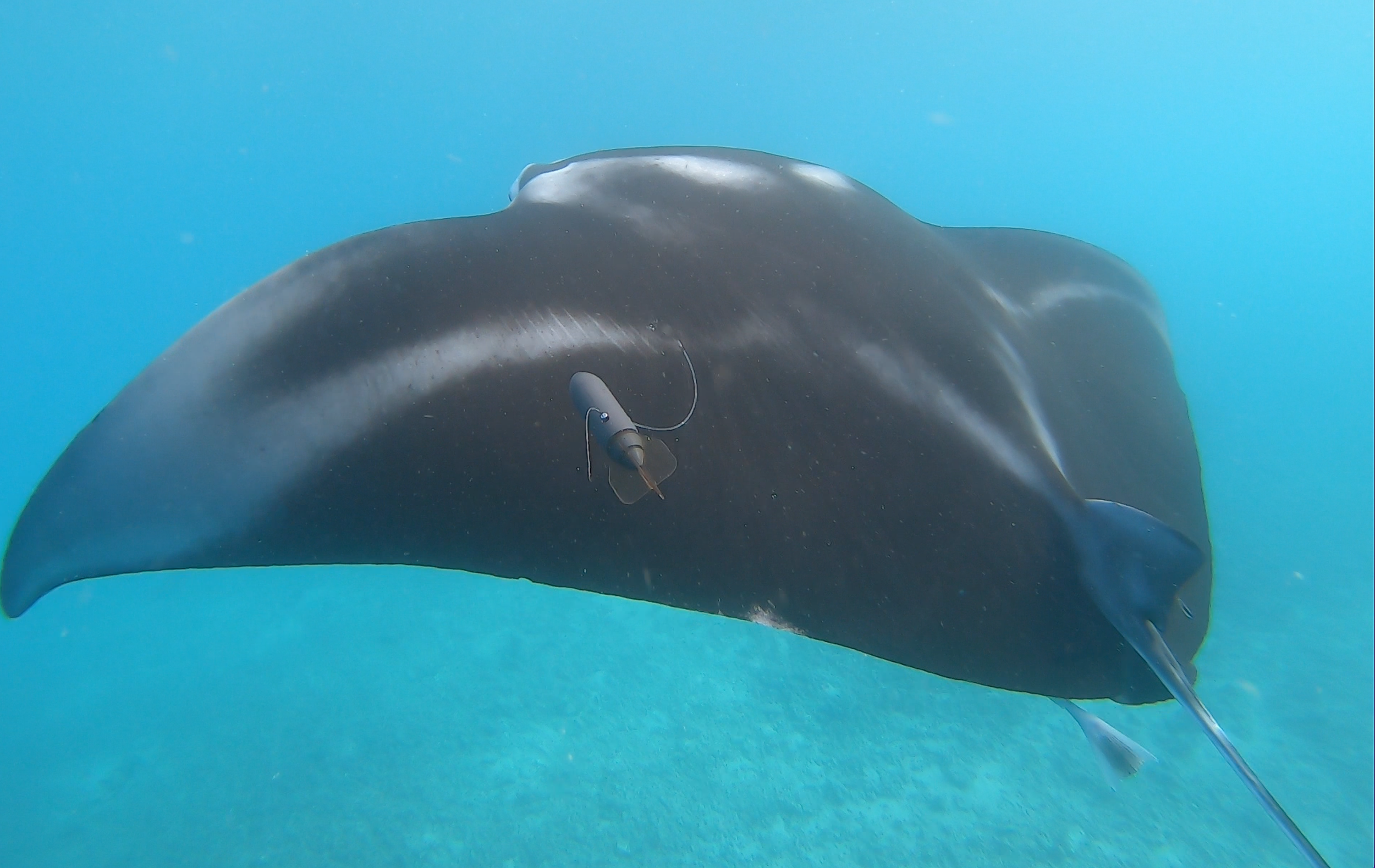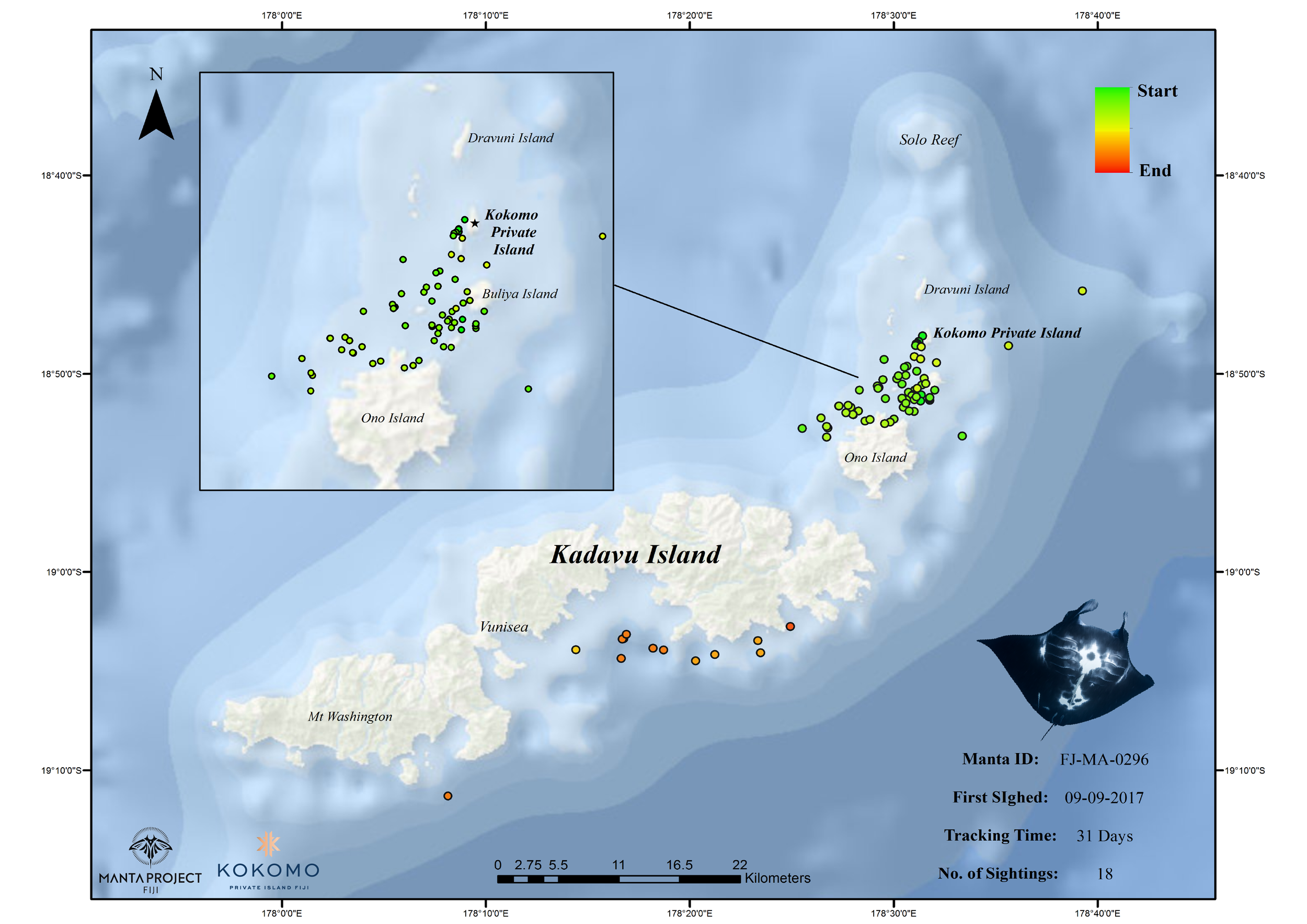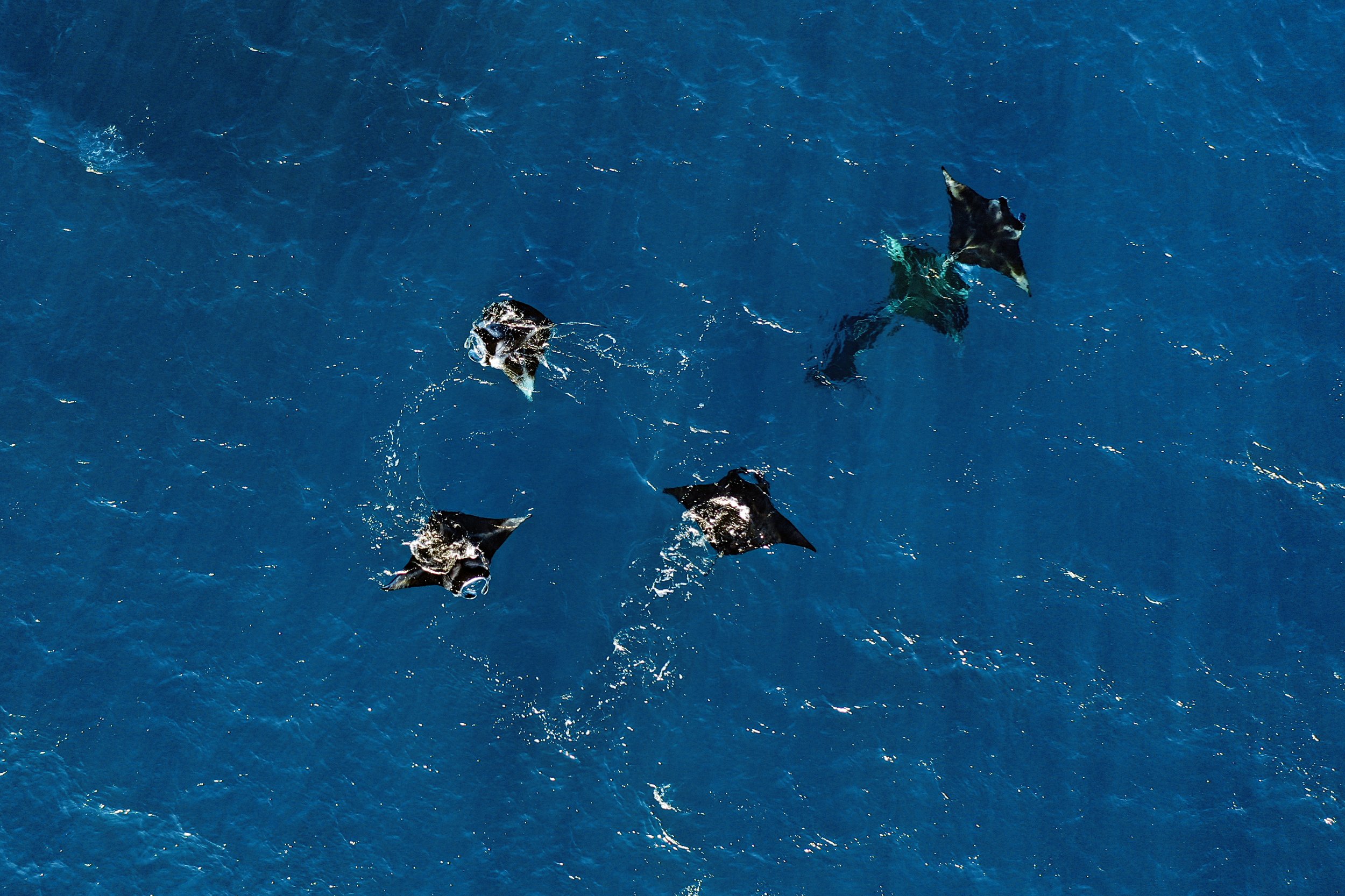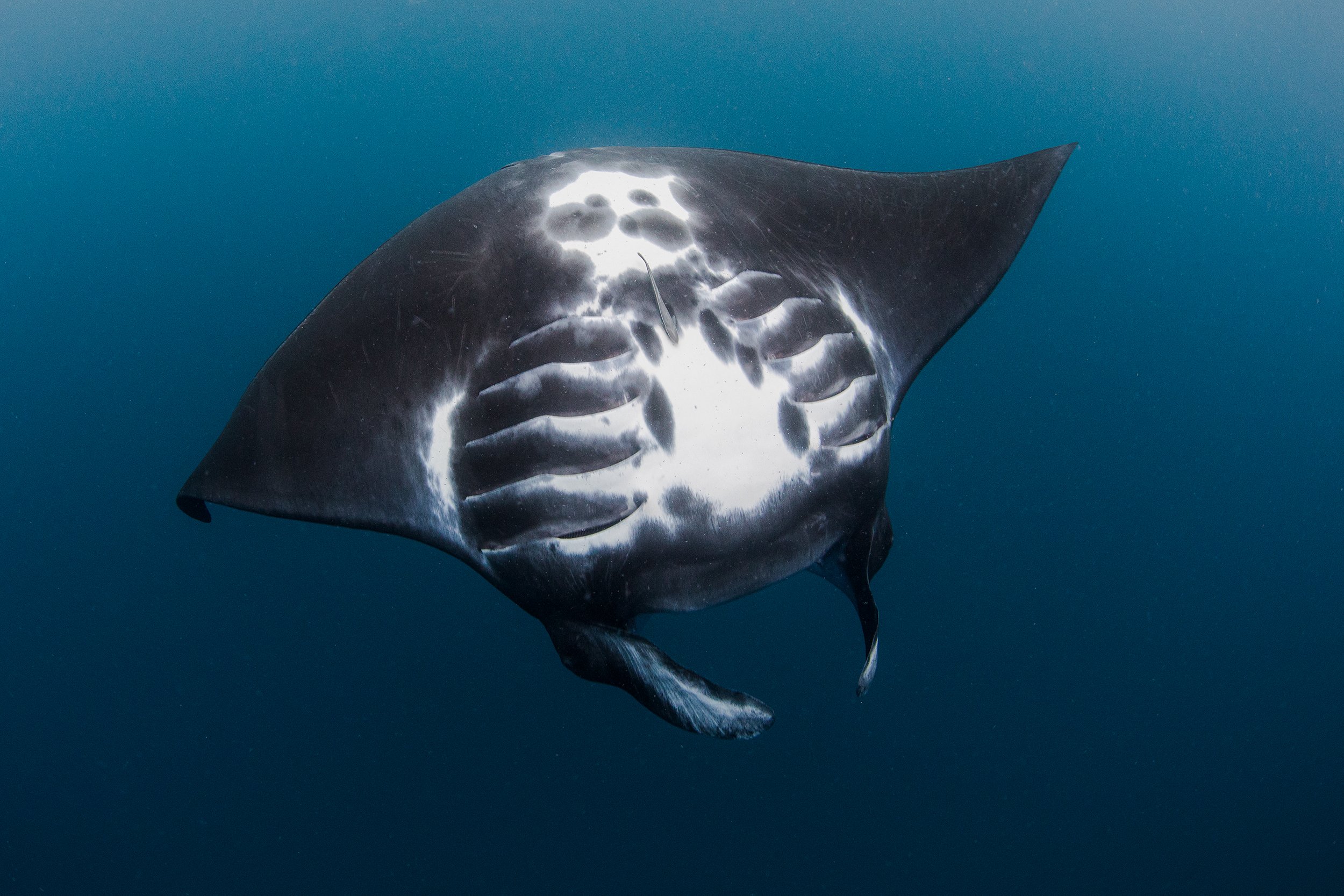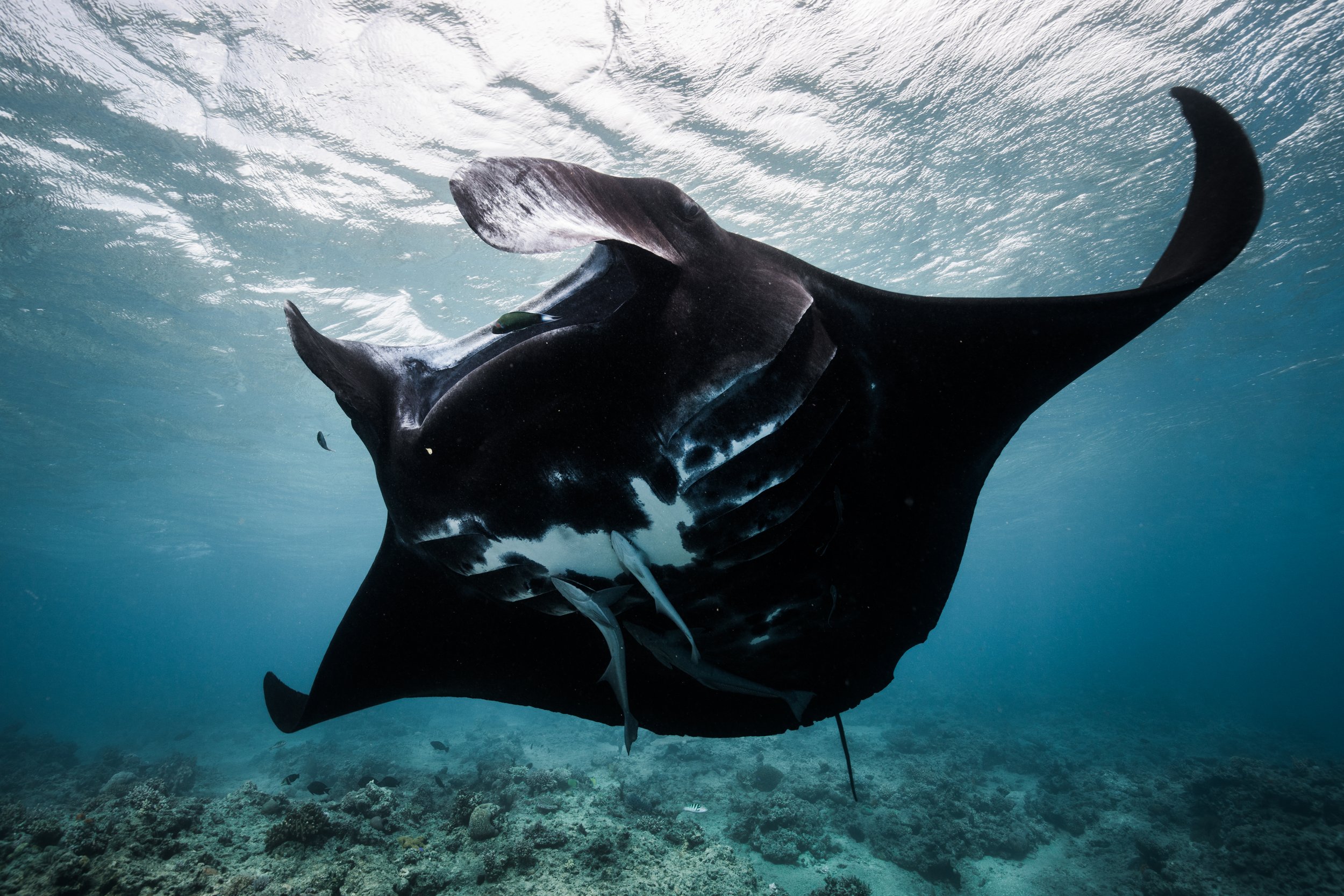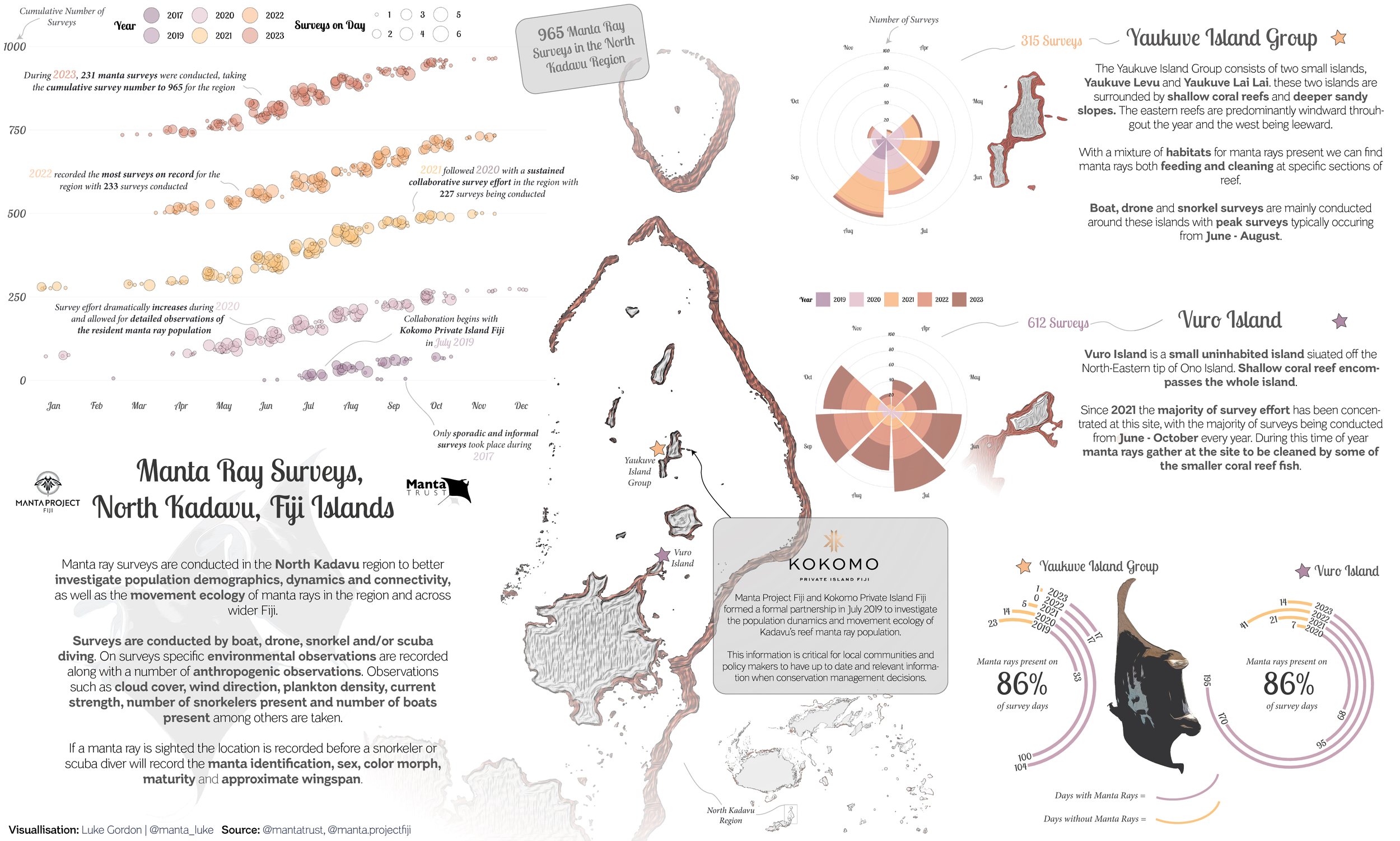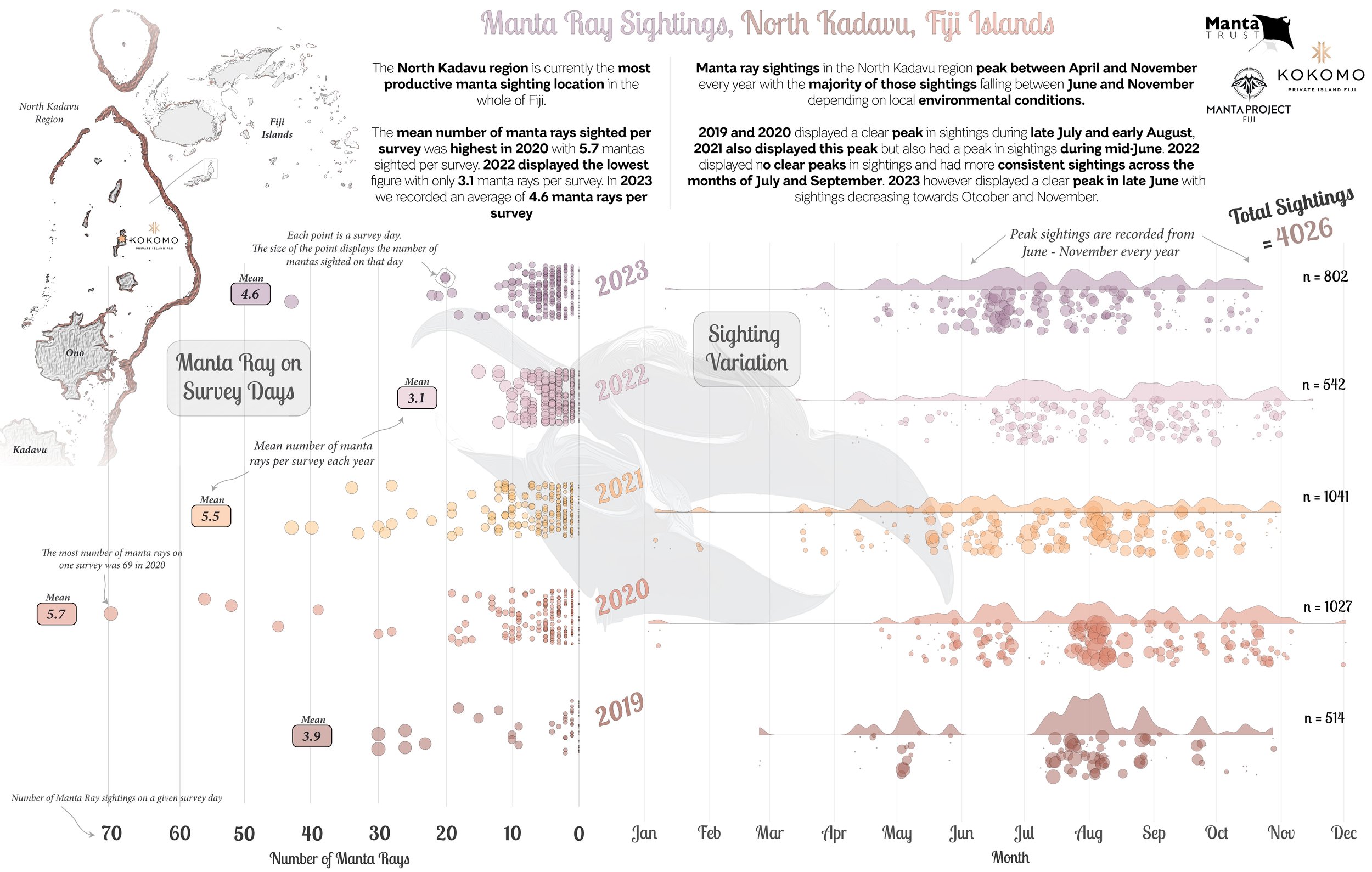Reef Manta Rays (Mobula alfredi)
Reef manta rays (Mobula alfredi) can be encountered at a number of sites throughout the Fiji Islands. Manta Project Fiji currently collects detailed data at three sites across the country, the Yasawa Islands, North Kadavu Island and Wakaya Island, with additional data being submitted by citizen scientists across the country at a number of other known aggregation sites.
Manta Project Fiji has collected data since 2012 on the country’s manta population demographics, population dynamics, movement ecology and how the environment and tourism/human interactions affect them. Since inception, the project has identified over 410 different individual reef manta rays from more than 6000 photo-ID sightings, this population number however is likely very conservative and the estimated population in Fiji could be over 1000 individual reef manta rays.
This long-term dataset has, and continues to allow researchers, policy makers and stakeholders to identify key patterns within the population and the critical habitats which the manta rays rely upon, shaping effective conservative management strategies at a local, national and regional level.
Research Techniques
Each individual manta ray has a unique spot pattern on their ventral surface (belly) which allows researchers, and citizen scientists to capture identification photo’s or video’s very easily.
With this data we can build a database of the different individual manta rays found throughout the country, investigate population demographics and even gain an insight into the movement ecology of Fiji’s reef manta population.
Submit your manta ID here.
Photographic Identification
Photographic identification forms the backbone of all manta ray research projects, and even though this technique is a cheap, non-invasive method it has limitations such as being restricted to primarily shallow reef habitats and only when divers & snorkelers are present.
To effectively conserve manta rays and their critical habitats within Fiji we need more information on their movements and which critical habitats they rely upon throughout the year. Both acoustic and satellite tags can delver a wealth of critical information that is vital when designing robust conservation management strategies.
For detailed information on manta tagging and tracking click here.
Acoustic and Satellite Tracking
Drones have become invaluable tools when conducting manta surveys. Spotting manta rays from the air is much easier than from the surface on a boat, drones also allow us to monitor various behaviours when humans are not present and even collect identifications when the manta’s somersault at the surface.
Drone Surveys
Melanistic Manta Rays in Melanesia
Melanism is a rare genetic variation which produces a large production of the black pigment melanin within skin cells. Melanism is more common on land than in the water world, black cats, both domestic cats and leopards are a classic showcase of melanism.
Underwater however melanism is extremely rare, with manta rays being one of the only species to showcase this genetic variation. That being said, even within the global population of manta rays melanism is rare still.
In Fiji the melanistic population currently makes up over 43% of all reef manta rays, one of the highest proportions in the world!


